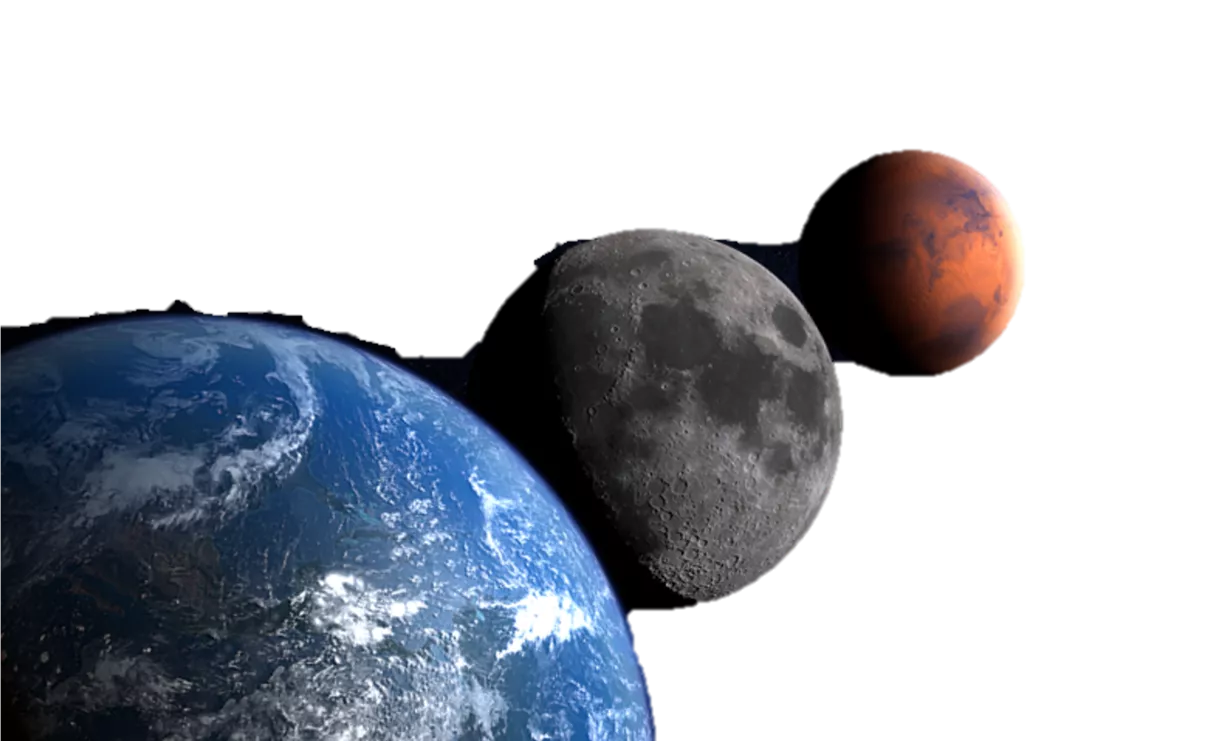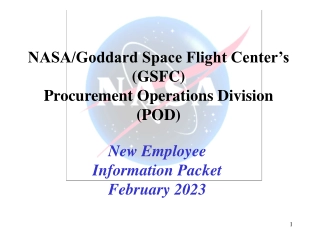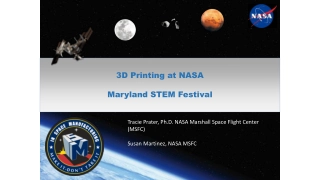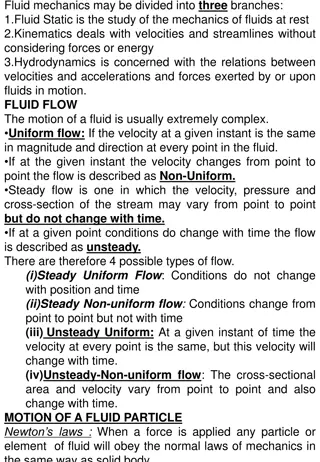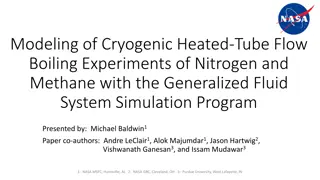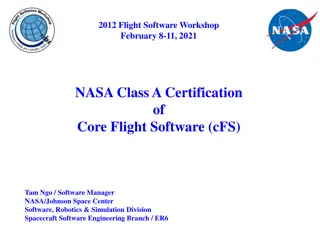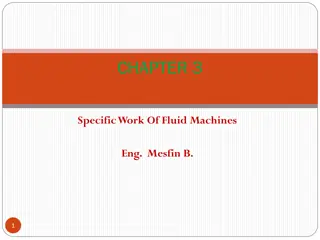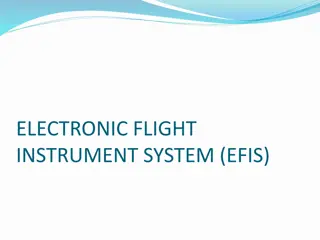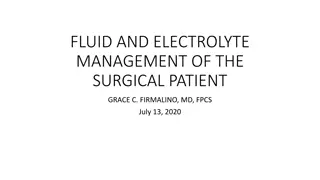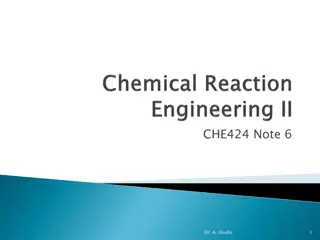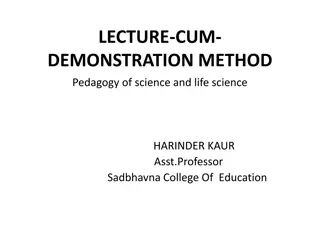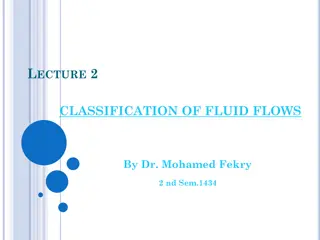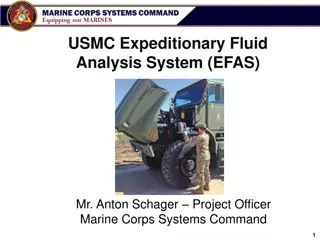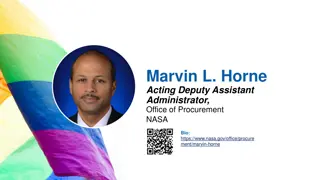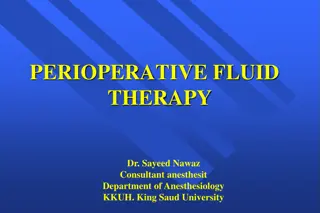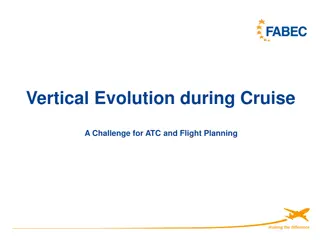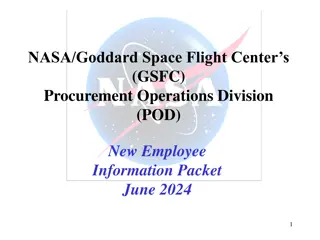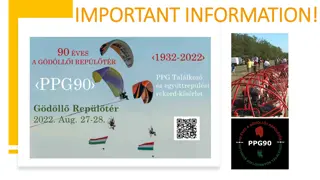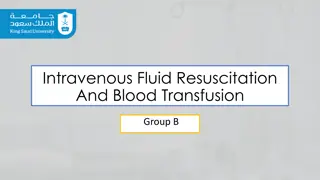NASA Cryogenic Fluid Management Flight Demonstration Summary
NASA selected 14 companies, including small businesses, to develop technologies for sustainable operations on the Moon under the Artemis program. The Cryogenic Fluid Management Portfolio Project aims to close technology gaps essential for future space missions. This Technology Demonstration Mission includes various activities to advance cryogenic fluid technologies for propulsion, landers, and resource utilization. The project focuses on achieving TRL 6 with a system-level Integrated CFM Flight Demonstration.
Download Presentation

Please find below an Image/Link to download the presentation.
The content on the website is provided AS IS for your information and personal use only. It may not be sold, licensed, or shared on other websites without obtaining consent from the author. Download presentation by click this link. If you encounter any issues during the download, it is possible that the publisher has removed the file from their server.
E N D
Presentation Transcript
NASA Cryogenic Fluid Management Flight Demonstration Summary: SpaceX 2020 Tipping Point Sean M. Kenny NASA Marshall Space Flight Center CFM Project Sub-Systems Portfolio Lead July 2023 https://www.nasa.gov
NASA selected 14 companies, including several small businesses, as partners to develop a range of technologies that will help forge a path to sustainable Artemis operations on the Moon by the end of the decade. U.S. industry submitted the proposals to NASA s fifth competitive Tipping Point solicitation, and the selections have an expected combined award value of more than $370 million. NASA s Space Technology Mission Directorate will negotiate with the companies to issue milestone-based firm fixed-price contracts lasting for up to five years. NASA's significant investment in innovative technology demonstrations, led by small and large U.S. businesses across nine states, will expand what is possible in space and on the lunar surface, said NASA Administrator Jim Bridenstine. Together, NASA and industry are building up an array of mission-ready capabilities to support a sustainable presence on the Moon and future human missions to Mars. John Reed is United Launch Alliance s Chief Rocket Scientist. In this role he manages the Technical Fellows program at ULA and is focused on a wide variety of initiatives from launch vehicle reuse to upper stage enhancements and trajectory planning, from defining our next generation capabilities to creating a culture of innovation and protecting Intellectual Property. He is a strong advocate for partnering with DARPA, NASA and Academia to advance technologies for use and infusion by industry to enhance the services provided. John is a long-time member of the AAS and an Associate Fellow of AIAA, actively engaged on a couple AIAA task force teams, the ASCEND event and AAS GN&C Conference. 2
CRYOGENIC FLUID MANAGEMENT PORTFOLIO PROJECT OVERVIEW Primary goal of the Cryogenic Fluid Management Portfolio Project (CFMPP) is to close technology gaps essential to NASA s future missions in science and exploration CFM technologies are essential for chemical and nuclear in-space propulsion, landers, and in-situ resource utilization The CFMPP is a Technology Demonstration Mission (TDM) portfolio project within NASA s Space Technology Mission Directorate (STMD) comprised of twenty-four individual CFM technology development activities Co-managed between Marshall Space Flight Center and Glenn Research Center TRL Objectives Technology end-state to be at least TRL6 with goal of TRL 7 Minimum TRL 4 for inclusion as an activity within the CFMP Project Primary goal of the CFMPP is to close technology gaps leading to a system-level Integrated CFM Flight Demonstration due to gravity dependent-nature of cryogenic fluid behavior There is a need to mature CFM technologies and integrated system operations, leading to a system-level integrated Large CFM Flight Demonstration (LCD) Project portfolio activities include non-flight demo related activities (ex. ISRU liquefaction) CFM technical goals and objectives are defined in Key Performance Parameters (KPPs) for based on SOA capabilities, captured in project plan. 3
Cryogenic Fluid Management (CFM) Portfolio Project Office Objective: Mature CFM technologies essential to NASA s future missions in science and exploration which utilize both chemical and nuclear in-space propulsion, landers, and in-situ resource utilization CFMP is a TDM portfolio project comprised of twenty-four individual CFM technology development activities, spread across four portfolio areas Technology entrance minimum of TRL 4, with project end state objective of TRL 7 CFMPP was established to consolidate management and integration of TDM CFM technology development activities NASA MSFC partnering with GRC for management and execution of the portfolio project System Demonstration Complexity Technologies Portfolio Subsystems Portfolio Demonstrations Portfolio Modeling Portfolio Scope: Design, development, and testing of complex systems of technologies to address technical challenges for specific CFM mission needs Scope: Design, development, testing, and evaluation of critical-need cryogenic components enabling long- duration CFM storage and propellant transfer Scope: Design, build, and test integrated flight and ground systems comprised of multiple CFM subsystems, enabling TRL 5 - 7 maturation for many technologies Scope: Develop, enhance, validate, and demonstrate Computational Fluid Dynamics (CFD) and Nodal tools to address capability gaps for predicting cryogenic fluid behavior in 1-G and microgravity environments for use as design tools for future NASA missions Testing and demo activities across the CFMP portfolio are used within modeling tools to predict CFM behavior at a flight vehicle scale in a relevant environment including microgravity Major Activities: Major Activities: Major Activities: Large CFM Demonstration Concept Planning Tipping Point Contract Demonstrations Hydrogen low- leakage valves and cryo-couplers 20W/20K Cryocooler 90W/150K Cryocooler Cryocooler Electronics and alternate generic 20W Cryocooler Radio Frequency Mass Gauge (RFMG) Two-Stage Cooling Demonstration Next-generation FOSS (fiber optics sensing system) Reduced Gravity Cryogenic Transfer CryoFILL Liquefaction Demonstration Solar White thermal coatings (RGCT) System Validation
CFM TECHNOLOGY PRIORITIZATION FOR FLIGHT DEMONSTRATIONS Focus on CFM Moon to Mars in-Space Developments Current state-of-the-art for Mars in-space transportation CFM storage is limited to NASA Lunar experience (10 days) Transfer (0G) Hardware and Operations Primary Focus Low Leakage Valves TVS (Injector) Transfer, Chill, Press Ops, Venting (unsettled) Liquid Acquisition Devices (LAD) Secondary Focus Cryocouplers Enabling Technologies Mass Gauging Long Term Storage Hardware and Operations Primary Focus Cryocooler development & Operations Tube on Tank / Tube on Shield Hardware and Operations Secondary Focus Reduced Heat Load Structures TVS (Spray) Mixing Pump Insulation Pressurization / Venting Ops Enabling Mass Gauging Long Term Duration (9 month+ travel time to Mars) 5
CRYOGENIC FLUID MANAGEMENT PORTFOLIO PROJECT OFFICE NASA Glenn Research Center Deputy Project Manager Deputy Chief Engineer Subject Matter Experts CFM Test Facilities (SMiRF, etc.) Blue Origin 2019 Tipping Point (Liquefaction) Creare 90K/150W RTB Cryocooler 20K/20W RTB Cryocooler Kent United Launch Alliance 2020 Tipping Point Smart Prop (CCSC) Lockheed Martin 2020 Tipping Point WA NH Skyre 2019 Tipping Point (Liquefaction) Oxeon 2019 Tipping Point (Liquefaction) CT CA ARC Tipping Point SME (Eta Space) Spectral Mass Gauging GRC NASA Langley Research Center Contracting Officers (2019 Tipping Points) Salt Lake City Denver ARC OH VA Vandenberg AFB Potential Launch Site (LM) LaRC UT CO NASA Marshall Space Flight Center NASA Project Office Chief Engineer CFM Test Facilities (Building 4530, Test Stand 300, etc.) Subject Matter Experts AFRC VAFB AZ Hawthorne, CA Tucson SpaceX 2020 Tipping Point 2019 Tipping Point (Cryo-Couplers) MSFC AL NASA Kennedy Space Center Cryogenics Lab Potential Launch Site (LM) Launch Operations KSC & Merritt Island, FL TX FL Houston, TX Armstrong Flight Research Center Sensuron ACO Flight Opportunities Program (RGCT Flight) Starbase Potential Starship Launch Site (SpX) Intuitive Machines Nova-C Lander (RFMG Demo) Merritt Island, FL Eta Space Paragon 2019 Tipping Point (CELSIUS) Boca Chica, TX 6
WHAT IS A TIPPING POINT CONTRACT? Jim Reuter, associate administrator of NASA s Space Technology Mission Directorate (STMD): These promising technologies are at a tipping point in their development, meaning NASA s investment is likely the extra push a company needs to significantly mature a capability, These are important technologies necessary for sustained exploration of the Moon and Mars. As the agency focuses on landing astronauts on the Moon by 2024 with the Artemis program, we continue to prepare for the next phase of lunar exploration that feeds forward to Mars. We are excited to see our investments and collaborative partnerships bring about new technologies for the Moon and beyond while also benefiting the commercial sector. The majority of the funding will help mature cryogenic fluid management technologies via in-space demonstrations The ability to store these super-cold liquids, whether they are launched from Earth or produced in space, for an extended period and transfer propellant from one tank to another, is crucial for establishing sustainable operations on the Moon and enabling human missions to Mars. These tipping points are truly partnerships with contributions from each company combined with contract award to complete demonstrations. Much of the scope is intended to advance a commercial capability Most of specifics are understandably proprietary Each company had the opportunity to seek expertise within NASA to assist in achieving the tipping point objectives which in the case of SpaceX included advanced modeling and analysis capabilities at MSFC and Glenn. 7
2020 TIPPING POINTS SPACEX CONTRACT SUMMARY SpaceX of Hawthorne, California, $53.2 million Large-scale fs on a Starship vehicle. SpaceX will collaborate with Glenn and Marshall. Contract goals (from contract SOW): to advance cryogenic fluid transfer and gauging technology through technology risk assessment, design and prototype testing, and on-orbit demonstration. Photo Source: Some rights reserved by Official SpaceX Photos Tipping Point Objectives will be complemented by a series of ground tests and on-orbit demo. Primary demonstration objective will be Header-to-Main LOX tank transfer Approach Transfer operations: Transfer 10 mT from the LOX header tank to the LOX main tank Instrumentation and onboard video to characterize performance and monitor propellant fill levels Tank pressure control and propellant management (settled) Transfer line chill-down and flow-control Ground testing for comparison between ground and flight test data as well as anchoring thermal/fluid models Schedule Original dates to be updated. Tipping Point Demonstration is dependent on Starship Orbital Launch Success. 8
NASA BENEFIT EXAMPLE Use of the data from this CFM Flight Demonstration to validate improved modeling and analysis tools for current and future cryogenic missions Example: Predicting, Controlling, and Measuring transferred cryogenic propellant There is uncertainty in propellant initial thermodynamic state post ascent / pre-transfer Temperature and pressure due to: Dynamic liquid to gas interactions (Slosh) Aero-heating Etc. There is a possibility of Two-Phase Flow which is a challenge to predict Data will improve validation of Dyer s Model using Thermal Desktop Just one of many uses for data 1) Modeling of a Large Scale Liquid Oxygen Propellant TransferTest, D. Hauser, B. Wendt, M. Faykus, L. Blackmore, H. Tani, G. Thome, 2023 Space Cryogenics Workshop, Hawaii 9
MAHALO! THANKS FOR ATTENDING! 10
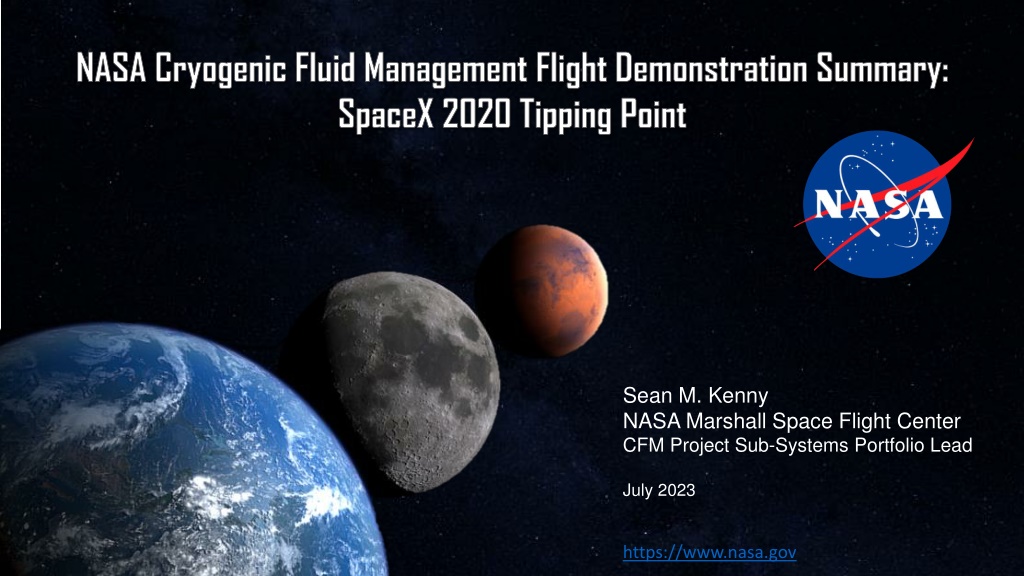
 undefined
undefined